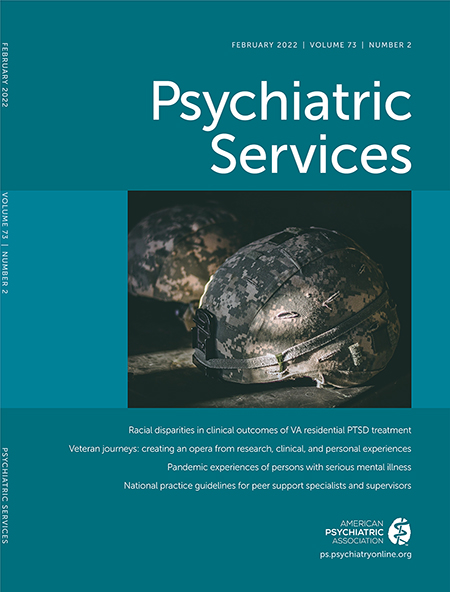Key Findings
In this systematic review, we identified 28 studies of care management for patients with serious mental illness that have assessed at least one predefined clinical, patient satisfaction, or utilization outcome. These studies were heterogeneous in regard to geography, time when the study was conducted, and study population. Both in the systematic review and in the meta-analysis, more than half of the studies included were reported in articles published in 2010 or later, suggesting that this review synthesized recent, contemporary data.
Diagnostically, the studies had substantial heterogeneity. More than half (16 of 28 studies) included some individuals who did not meet our definition of serious mental illness (i.e., having schizophrenia spectrum disorder or bipolar disorder). A stricter approach to the study population for this review (e.g., requiring all participants to have serious mental illness or limiting the participants to those with schizophrenia spectrum disorder only) would have led to substantially fewer included studies. Aside from differences in diagnoses, however, most studies did appear to enroll general outpatient populations in their respective cohorts. Only a small minority of the studies had other restrictions on enrollment, such as homelessness or comorbid conditions.
Similarly, study interventions were heterogeneous, but some trends were observed. All interventions involved some in-person component, and most involved delivery by a clinician care manager (e.g., a nurse or social worker). Most studies described the interventions as involving social service coordination (17 of 28) and some direct service provision (17 of 28), such as psychoeducation, counseling, and skill training. Other studies’ interventions may have included these activities but were not described as such. Indeed, we presume that, in practice, a greater number of study interventions likely included social service coordination and direct service provision. The one distinct category of interventions appeared to be those aimed at improving general medical health (four of 28 studies).
The results of the qualitative review of outcomes across studies indicated that, aside from patient satisfaction and health care costs, most studies showed no significant difference in outcomes between intervention and control cohorts. The meta-analysis revealed a small, positive effect of care management on psychiatric symptoms (Hedges’ g=0.15), although we found evidence of statistically significant heterogeneity among studies. The meta-analysis also found a small, positive effect of care management on QOL, both for overall QOL (Hedges’ g=0.13) and mental QOL (Hedges’ g=0.26). Although the overall QOL result was largely attributable to a single study with a large sample size (
29), statistically significant heterogeneity was not observed for this domain, and the study was not an outlier in the funnel plot. We found that care management was associated with a small reduction in the number of inpatient psychiatric hospital days (Hedges’ g=0.16) but not with a reduced number of inpatient psychiatric hospitalizations. This discrepancy may be explained by a difference in statistical power; four studies were included in the analysis of hospital length of stay, whereas only two (a subset of the four) were included in the analysis of the number of hospitalizations. Finally, on the basis of a limited number of studies, care management had a large, positive effect on patient satisfaction (two studies in the meta-analysis) and a large, negative effect on total health care cost (two studies in the meta-analysis).
A comparison between our results and the results obtained with ACT and ICM is of interest. Whereas ACT and ICM have been found to reduce hospitalization rates, increase time in the community, and improve employment outcomes (
7,
13), their impact on psychiatric symptoms has been less clear. In contrast, our results indicate that care management has a clear impact on psychiatric symptoms and QOL. It may be that the different underlying objectives of the programs explain this difference. That is, whereas ACT was designed with the goal of supporting deinstitutionalization, reducing psychiatric hospitalization (with studies of ACT often requiring enrolled participants to have had a high level of hospital use), and maintaining function in the community, the studies of care management in this review represented a range of objectives, including symptom improvement as well as reduction of acute care utilization. However, most care management interventions in this review were performed by clinically trained individuals and entailed providing some degree of direct services, such as psychoeducation and skills training. This finding suggests that, overall, contemporary care management for individuals with serious mental illness has support and coordination functions in the service of clinical goals.
Care management interventions were associated with higher total health care costs, but this result should be interpreted with caution. Cost in our meta-analysis was based on aggregating data from only two relatively small studies, between which there was statistically significant heterogeneity. Additionally, one of the studies (
55), included only in the qualitative synthesis (because of the lack of reporting on measures of dispersion), indicated a positive effect of the care management intervention from a cost perspective. Another consideration is that our definition of cost in the present analysis was limited only to health care costs. In contrast, the original ACT studies considered cost from a broader, societal perspective (
8,
60) by incorporating other costs, such as those incurred by the criminal justice system, which were beyond the scope of our study. Indeed, the complexity of measuring the costs of mental health programs cannot be understated, and there may be inter- and even intrastudy heterogeneity in how costs are calculated (
61,
62). Finally, cost findings are difficult to interpret in the absence of other outcome data; a costlier intervention that also achieves favorable clinical outcomes may be cost-effective.
Limitations and Next Steps
This review had several limiting factors. First, the studies included were heterogeneous, representing a range of interventions, populations, and settings. Whereas all the studies featured interventions that met our definition of care management, some heterogeneity of any effects on the measured outcomes may be attributable to differences among the interventions and intervention aims. Furthermore, as noted above, studies included varying levels of detail about the care management interventions, making it difficult to know with certainty exactly what the intervention components were. Ultimately, we posit that intervention heterogeneity is unavoidable in any review of care management or other community-based psychosocial support. As Rapp notes in a 1998 review of case management (
11), “Replication of models is virtually impossible and ‘truth’ probably lies in components of the models rather than the entire models.” Indeed, only a minority of the studies included in this review identified a preexisting model of care management that their intervention embodied; furthermore, when such a model was identified, several studies noted that the model was a paradigm rather than a basis for intervention fidelity.
Additionally, our analyses had limited power to draw subgroup-level conclusions about the effectiveness of care management across the various outcomes in the moderator analyses. For instance, only three of the 12 studies included in the meta-analysis were conducted in the United States. The role of geography, among other variables, is important for future research on care management.
Finally, most of the included studies were limited by low rates of response, ascertainment, and exposure. However, because adherence to care is often a goal rather than an assumption in psychosocial interventions for individuals with serious mental illness (
13), it may be inappropriate to expect studies to achieve high exposure; indeed, any studies that do may have features that limit external generalizability.
Future directions for this work include additional research to determine which patient-, intervention-, and context-level factors are associated with the effectiveness of care management for individuals with serious mental illness. To do so, more quality research is needed. In particular, given the heterogeneity of care management interventions, investigators need to understand and enumerate the components of each care management intervention. Although previous studies have attempted to address the issue of heterogeneity by comparing categories of care management (
10,
11) or through qualitative analysis of care manager report (
63,
64), a fresh approach to this question is needed. Given our findings, we believe it is important for studies to specify whether care managers are performing social service coordination or direct service provision and what those activities entail. Finally, future studies are needed to couple costs with other outcomes such that interventions can be compared in terms of relative cost, health care utilization, and clinical impact. Indeed, cost-effectiveness analyses, which this study was not designed to perform, are likely to be critical in influencing policies and funding for care management programs.

